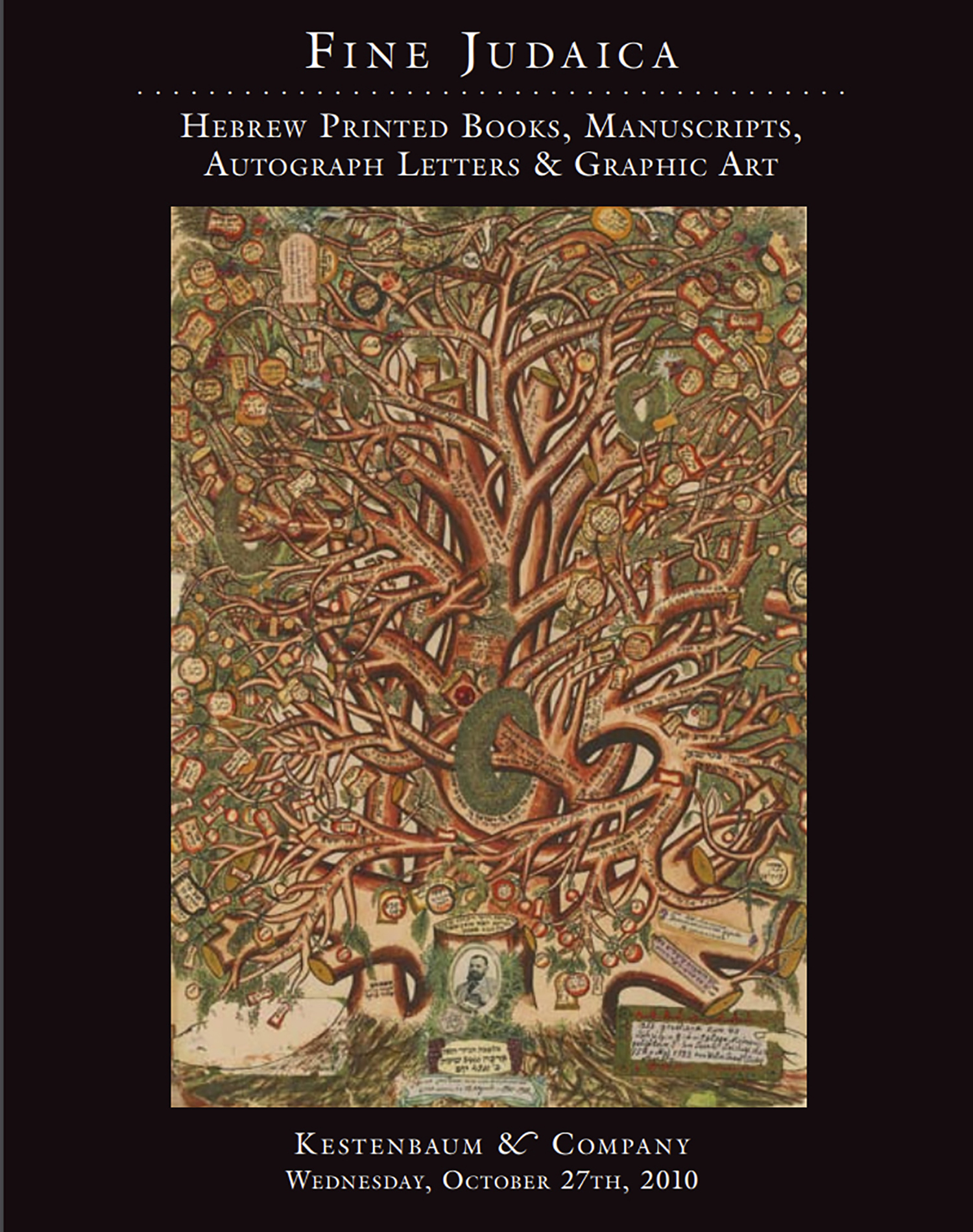(LITURGY).

AUCTION 49 |
Wednesday, October 27th,
2010 at 1:00
Fine Judaica: Hebrew Printed Books, Manuscripts, Autograph Letters and Graphic Art
Lot 352
(LITURGY).
Zoip-Dzumin: 1732-38
Est: $20,000 - $25,000
PRICE REALIZED $20,000
An extensive Prayer-book according to the meditations (Kavanoth) of Rabbi Isaac Luria (Ari Zal).
R. Isaac Luria's teachings contain many important Kabbalistic explanations and Kavanoth on prayer. The most detailed, emanating from the circle of R. Chaim Vital (Luria's eminent disciple), were the Sha'ar HaKavanoth and Peri Etz Chaim. However Vital did not compose them in the order of the prayer-book. The next generation of Kabbalists began to compile prayer-books integrating the Lurianic meditations into the corresponding text of the prayers. These texts, circulated in manuscript in many different redactions among regional circles of Kabbalists, bore the title "Siddur Ha'Ari Zal." Our manuscript predates the first printed Lurianic prayer-book, Sha'arei Rachamim (Salonika, 1741), as well as the Aschkenazic prayer-books incorporating the Lurianic kavanoth published in Königsberg, 1765; Zolkiew, 1781; Lvov, 1788; and Koretz, 1797.
The general introduction to the printed Zolkiew edition is in this manuscript entitled "Hanhagoth bi-tephilah u-ketzath yichudim...le-zakeich ha-neshama" (proper conduct and kavanoth before and during prayer "to purify the soul"). It is lengthier in some cases and contains a number of variants from the printed version. For example, the manuscript states "one should not say a blessing quickly and 'be-hal'atah'" (gobbled), whereas the printed version reads "be-havla'ah" (swallowed). Although the meaning is similar, there is a slightly different connotation. (Esau said to Jacob concerning the lentil soup: "Hal'iteini na" [Genesis 25:30].) The marginalia also contain extra words hinting at kabbalistic concepts not delineated in the published version. Furthermore,the manuscript provides diagrams (sorely lacking in the printed version) that enable the reader to visualize while meditating. For example, we are told to meditate upon the Holy Name in the form of "eynin" ("eyes"). Without the diagram on f.7r., the meaning would be murky at best. The manuscript also contains a more explicit explanation of many of the kavanoth, plus a slightly different format as compared to the published version in the Zolkiew edition.
Although the title-page states that the prayer-book was redacted based upon R. Chaim Vital, it is possible that the editor of this Siddur was influenced by the circle of R. Israel Sarug. It includes: Tikun Chatzoth; rising in the morning; washing hands; daily, weekly and festival prayers; prayers for visiting the Kothel Ma'aravi; the wedding ceremony; circumcision ceremony; recitations at meals; the meal of a Talmid Chacham; conjugal relations; retiring for the night; sanctification of the New Moon and a Hagadah shel Pesach. Included also is a "Seder Limud," a guide for studying Mishnah, Zohar and Kabbalah, and kavanoth for the commandments of Pe'ah, Chalah,Terumoth and Ma'aseroth, Shechitah, Bikur Cholim, Ma'akeh, and a special incantations against a plague.
The scribe of this manuscript was Yom Tov Lipman ben Aryeh Leib, great-grandson of R. Yom Tov Lipmann Heller, author of Tosphoth Yom Tov. The two-page poetic colophon carries the acrostic "Yom Tov Lipman ben Aryeh" and is datelined "At present in the remote village of Zoip-Dzumin because of [the problems] of the time...Tammuz, 1732." The poem indicates that Yom Tov was no mere copyist but a scribe well-versed in Kabbalah and indeed was a member of the esoteric circle of Polish kabbalists originating in Cracow. Containing many kabbalistic literary allusions, it appears that Yom Tov wrote this magnificent prayer-book for his personal use. On the blank leaf after the colophon is an inscription dated 1753 bemoaning the death of "my father Isaac, son of R. Yom Tov Lipman." The final leaf (after the epistle of R. Moses Zacuto and before the added matter) contains another interesting poem of twenty lines by the scribe containing the acrostic "Yom Tov Lipman ben Aryeh Leib." This is an elegy for Yom Tov's son who passed away on the 19th of Kislev, 1728 and was buried in the community of Przemysl. This elegy antedates the colophon (1732) by four years, and the title (1738) by ten years. The first three and final three leaves are written in another hand and contain among other matters, a transcript of a Kethubah datelined "Mardin [Turkey], 1817," and an appeal for funds.
